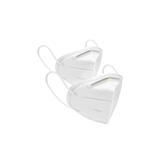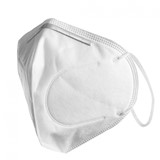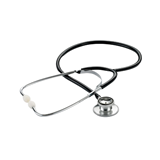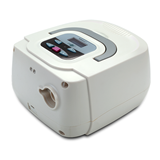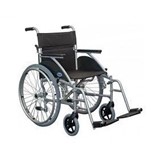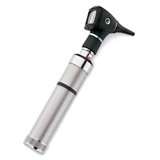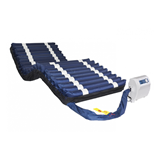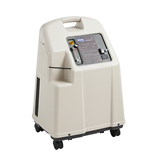Key takeaways
- Average bulk PPE costs: Surgical masks start at $0.04/unit, gloves from $0.06/pair, and isolation gowns from $1.20/unit for bulk purchases (10,000+ units).
- Price savings in bulk: Buying PPE in bulk can save up to 35–60% compared to retail pricing, especially during stable supply periods (TGA, 2024).
- Top PPE types: Common bulk items include disposable masks, N95 respirators, nitrile gloves, face shields, gowns, goggles, and coveralls.
- Standards to check: PPE must comply with AS/NZS 1715 (Respiratory protection), AS/NZS 1337 (Eye protection), and TGA registration for medical-grade equipment.
- Lead times: Bulk PPE orders may take 7–21 business days, especially for imported goods or customised branding.
- Financing options: Flexible trade credit or supply finance arrangements are often available for orders over $20,000.
Introduction
Personal Protective Equipment (PPE) remains a critical investment across Australian industries, healthcare, mining, construction, manufacturing, and retail. Whether you’re outfitting a medical facility, managing site safety, or preparing for seasonal outbreaks, bulk PPE purchasing helps reduce costs, streamline inventory, and ensure consistent compliance.
This guide walks you through the essentials of bulk PPE buying in Australia, from types and pricing to sourcing, standards, financing and supplier evaluation, so you can make informed, cost-effective decisions without compromising on safety.
Common PPE types for bulk procurement
Understanding what PPE is typically bulk purchased helps plan procurement better. These items are most often bought in pallet or carton quantities (1,000–100,000 units).
Hand protection
- Nitrile gloves (preferred for medical and industrial use)
- Latex gloves (cheaper but may cause allergies)
- Vinyl gloves (for low-risk environments)
Bulk price range: $0.06 – $0.18 per pair
Respiratory protection
- Surgical masks (Level 2/3)
- N95/P2 respirators (for high-filtration environments)
- Reusable half-face respirators (used in construction and mining)
Bulk price range: $0.04 – $1.50 per unit
Body and clothing protection
- Disposable isolation gowns
- Coveralls and boiler suits
- High-visibility safety vests
Bulk price range: $1.20 – $5.00 per unit (isolation gowns)
Face and eye protection
- Face shields (anti-fog, full face coverage)
- Safety goggles (impact-resistant, sealed or vented)
Bulk price range: $0.80 – $3.50 per unit
PPE bulk buying prices in Australia
Bulk pricing varies based on:
- Material type and certifications
- Quantity ordered
- Domestic vs international sourcing
- Market demand at time of order
Indicative bulk pricing (2025 Q2)
- Nitrile gloves: Priced between $0.08 and $0.16 per pair when ordered in quantities of 10,000 units or more. Available from both local and international suppliers.
- Surgical masks: Range from $0.04 to $0.10 per unit for bulk orders of 20,000 units or more. Predominantly sourced locally within Australia.
- N95/P2 respirator masks: Cost between $0.80 and $1.50 per unit when ordered in bulk lots of 5,000 units or more. These are generally imported, with availability subject to international logistics.
- Isolation gowns: Typically priced from $1.20 to $3.50 per gown, with a minimum order quantity of 2,000 units. These are available through both local and overseas suppliers.
- Face shields: Range in price from $0.90 to $2.50 per unit for bulk orders of 5,000 units or more. Commonly available from local Australian distributors.
- Safety goggles: Cost between $1.20 and $3.00 per unit, with minimum bulk orders starting at 3,000 units. Sourced from both domestic and international channels.
How PPE bulk procurement works
Operations and logistics
- Sourcing: Choose from verified suppliers with TGA-approved goods
- Ordering: Submit RFQ (Request for Quote) with volume, specs and delivery deadlines
- Payment: Standard terms are 30–60 days for bulk orders
- Delivery: Expect 1–3 weeks depending on stock location and quantity
Storage and stock rotation
- Store PPE in a dry, climate-controlled environment
- Use FIFO (First In First Out) method to avoid expiry-related losses
- Allocate shelf space with clear labelling and batch tracking
Maintenance and expiry considerations
Even though PPE is mostly disposable, proper storage and usage guidelines prevent early expiry or spoilage.
Typical shelf life
- Surgical masks and gloves: 2–3 years
- N95 masks: 5 years
- Gowns and coveralls: 3–5 years if sealed
Always check packaging for expiry date and storage instructions.
Hidden costs to watch out for
When buying PPE in bulk, it’s easy to focus only on the unit cost. But hidden expenses can quickly add up and erode your savings if not accounted for during procurement. Below are some of the most common hidden costs to budget for:
- Freight and logistics surcharges
- International orders may incur customs clearance fees, fuel surcharges, and local warehousing costs. Expect air freight for urgent orders to increase landed costs by 15–30%.
- Storage and stock handling
- Bulk deliveries require storage space that meets temperature, humidity and hygiene standards. If you don’t have on-site capacity, consider the cost of off-site warehousing or 3PL services.
- Short-dated stock or expiry waste
- PPE items such as masks, gloves, and gowns often have shelf lives of 2–5 years. Overstocking without accurate forecasting can lead to disposal costs and wasted investment.
- Minimum order and split delivery fees
- Some suppliers charge extra if you split large orders into multiple deliveries or fall below set MOQs. Always clarify delivery terms upfront.
- Packaging or labelling customisation
- Rebranding PPE for internal use or resale may involve additional labelling, repackaging, or compliance documentation, particularly for TGA-registered products.
- Return shipping and restocking fees
- Most PPE is non-returnable once opened. Where returns are accepted, restocking fees of 10–20% may apply, along with the cost of return freight.
Pro tip: Ask suppliers for a fully itemised quote, including landed costs, customs clearance, and delivery fees, to avoid unexpected surprises.
Inventory management and forecasting tips
Effective inventory planning is essential when purchasing PPE in large volumes. It prevents over-ordering, minimises waste, and ensures stock is available when you need it most, without tying up unnecessary capital.
Here’s how to manage PPE stock smarter:
- Calculate accurate usage rates
- Track average daily or weekly consumption for each PPE type. For example, a five-person dental clinic may use 1,200–1,500 gloves per week, depending on patient volume. Use past data or estimate based on operating hours and staff roles.
- Apply FIFO or FEFO stock rotation
- Use First-In First-Out (FIFO) for items without expiry, and First-Expiry First-Out (FEFO) for items with expiry dates like masks and gloves. This reduces the risk of having to discard unused PPE.
- Maintain a rolling 3-month buffer
- In uncertain supply markets, keep a minimum of 8–12 weeks’ worth of PPE on hand. This protects against delays in restocking or price surges due to sudden demand spikes.
- Label and batch stock clearly
- Store PPE by product type, size, and expiry date. Use visible labelling with batch numbers to enable fast tracking, recalls, or audits.
- Automate inventory tracking
- Use basic inventory management software or even a QR code system to monitor stock levels, alerts, and reorder points. For clinics and small businesses, free or low-cost options Inventory may suffice.
- Schedule seasonal reviews
- Conduct quarterly stock checks, and increase ordering ahead of winter (flu season) or known procurement cycles. Some PPE items experience global shortages during peak healthcare periods.
Pro tip: Engage staff in usage monitoring to help refine consumption estimates and prevent unnecessary waste or misuse.
Financing bulk PPE purchases
Bulk buying can strain cash flow, but several solutions are available.
Common financing options
- Trade finance lines for orders above $20,000
- Supply chain finance through non-bank lenders
- Business credit cards with purchase protection
- Leasing contracts for reusable PPE machines (e.g., UV sterilisers)
Government-backed COVID-19 PPE support grants ended in 2023, but some State-based occupational safety grants still apply.
Warranty and return policies
Though most PPE is consumable, reputable suppliers offer guarantees.
- Minimum 6–12 months product warranty for reusable items (e.g., face shields)
- Defective goods policies usually allow replacements within 7–14 days
- No return policies common for opened disposable PPE due to hygiene laws
Compliance and certification in Australia
Australian PPE buyers must ensure that products meet regulatory and safety standards.
Key standards and authorities
- TGA (Therapeutic Goods Administration) for medical-grade PPE
- AS/NZS 1715 for respiratory equipment
- AS/NZS 1337 for eye protection
- Safe Work Australia industry-specific PPE recommendations
- ISO 13485 certification for manufacturing quality
Always request certificates of conformity and test reports.
Tips for choosing a reliable PPE supplier
Vetting checklist
- TGA registration (if buying for medical use)
- Bulk pricing transparency
- Local warehousing or fast import ability
- Positive reviews and safety recall history
- Customisation options for logos or colour codes
Frequently asked questions (FAQs)
What is the minimum order quantity (MOQ) for bulk PPE?
Most Australian suppliers set MOQs between 2,000 and 20,000 units depending on the product type and packaging.
Can I import PPE directly from overseas?
Yes, but ensure the product meets Australian standards and passes customs and TGA inspections. Be prepared for longer lead times.
How do I know if PPE is TGA-approved?
Search the TGA ARTG (Australian Register of Therapeutic Goods) by product or sponsor name. Suppliers should provide ARTG ID on request.
Are bulk PPE purchases tax deductible?
Yes, PPE qualifies as a business operating expense under Australian tax law (ATO, 2025). Ensure proper documentation for GST claims.
Can I return bulk PPE if I over-order?
Returns are rarely accepted for hygiene-critical products unless defective. Mitigate by ordering in quarterly tranches or using storage agreements.
Final thoughts
Buying PPE in bulk is not just about stockpiling, it’s about protecting staff, complying with legislation, and saving money. Whether you're sourcing thousands of surgical masks or negotiating a year-long nitrile glove contract, doing your homework ensures product safety, budget efficiency and operational peace of mind.
Use this guide as your benchmark, then request multiple quotes, check compliance certifications, and structure your buying for scale.


